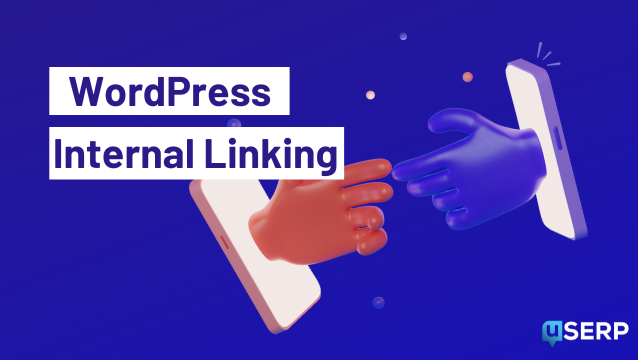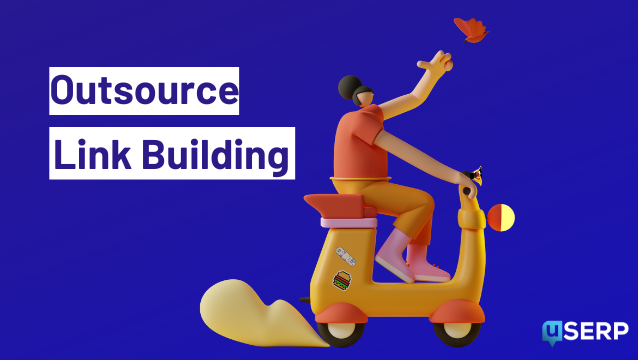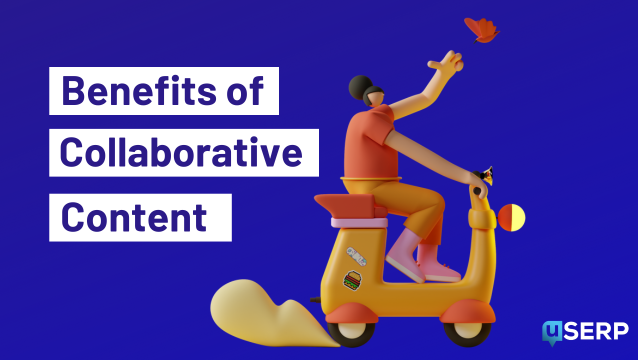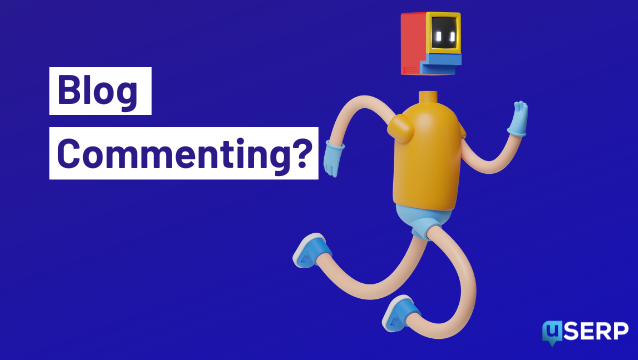Your e-commerce audience doesn’t just expect great content from you. It demands it.
I’ve helped e-commerce businesses generate demand around their products, boost rankings, and build customer loyalty.
And you know what I’ve learned?
Intentional and quality e-commerce content pays off.
How?
It answers frequently asked questions and removes barriers to entry.
It helps buyers understand how a product can better their lives.
And it closes the gap between curiosity and purchase.
Here’s the deal …
Without content assets, optimizing your marketing funnel is next to impossible.
Without a solid content strategy, creating engaging content is a pipe dream.
And without a plan, you’ll find yourself stuck in the same place a year from now.
That’s why it’s crucial to embrace and implement content marketing for your e-commerce business as soon as possible.
If you’re ready to turn around your content game this year, stick around for five best practices you can use to turn prospects from a mere “target audience” into a loyal community.
Content marketing for e-commerce: Why it matters
Valuable content takes your product and puts it on stage for the world to see, supporting the entire customer journey, from awareness to advocacy. Using a well-structured content model ensures that content is consistently delivered, optimized, and strategically aligned with your brand’s goals and values.
Let’s take a closer look into why content marketing for e-commerce matters.
Reveals your brand’s unique identifiers
It’s easy to see what makes your brand stand out when consistently putting out quality content. Brand personality, company ethos, vision, and values shine through when you create and distribute content.
Relevant content can also reveal other gems about you as a seller, such as your:
- Passion for sustainable manufacturing and packaging
- Genuine desire to solve your target audience’s problems
- Commitment to building products that last
- Heart for product innovation
These unique identifiers not only help you stand out, but they also help you attract buyers that are in alignment with your brand vision — two key pillars to creating a business that scales.
Stimulates brand awareness
Content announces your store’s presence.
It spreads the word that you actually exist and helps spark interest in your product.
Think about it. Can you imagine learning about a new product without some form of content asset piquing your interest?
Unless you’re taking a word-of-mouth approach or relying solely on ads, you need content to put your brand on the map (and remain top-of-mind with your loyal customers, too).
Encourages higher conversions
When a potential customer is weary about you, you can’t afford to let any confusion slip through.
Enter: High-quality content.
High-quality content answers questions that contribute to barriers to entry.
Anticipating these questions is pivotal to creating an e-commerce content strategy that prevents unnecessary conversion losses.
Some examples of crucial questions your content should answer include the following:
- What is this product?
- Do I really need another product like this?
- What makes this product so special?
- How do I use this product?
- How would this product fit into my daily routine?
- Why should I choose this brand over its competitors?
- Can I try this product before I buy it?
- What benefits can I expect after using this product?
- How much does this product cost, and how can I buy it?
- Is the buying and shipping process fast and convenient?
Boosts e-commerce brand loyalty
When you consistently create content that informs, dazzles, and gives value, you form meaningful connections with your audience, which over time, helps nurture them into a loyal community.
Your community will also start to be on the lookout for your content and enjoy sharing it with their peers.
You know you’re onto something when your customers search for your brand name just to see what you’re up to lately.
Loyal customers are considered the best customers for several reasons:
- Repeat business: Loyal customers are more likely to make repeat purchases, which can provide a steady revenue stream for a business.
- Higher lifetime value: Loyal customers spend more money over time and therefore have a higher lifetime value than one-time customers.
- Referrals: Satisfied, loyal customers are more likely to recommend a business to their friends and family, which can lead to new customers and additional sales.
- Brand advocacy: Loyal customers are more likely to advocate for a brand, which can help to increase brand awareness and credibility.
- Lower acquisition cost: Acquiring a new customer can be quite costly, whereas keeping an existing customer is less expensive. So, loyal customers can help to reduce marketing and advertising costs.
Don’t sleep on the power of building a loyal customer base. The proof is in the pudding.
5 content marketing best practices e-commerce sellers need to know (+ visual examples)
No e-commerce seller can afford to skip out on the following content marketing best practices:
1. Create a knowledge base
Whether you sell simple or complex products, creating a knowledge base is your best defense against confused buyers.
How?
A knowledge base teaches newbies how your products actually work. It also supports long-time buyers looking to get more value and depth from your products.
Another benefit you’ll notice after creating a knowledge base is the ridiculous amounts of pressure it alleviates off your customer support team — preventing the same tickets and questions from clogging your pipeline. Additionally, your customer support team can have their own knowledge base platform to share important information with each other. This way, your employees can easily and instantly store and share files and documents they need for performing certain tasks.
Hint: The questions listed in the checklist above are a great starting point for knowledge base topics. You can also pull specific questions from your support tickets, feedback forms, feedback form templates and customer surveys. Don’t forget to check the SERPs for frequently asked questions, too!
2. Create and optimize a company blog
As an SEO-obsessed marketer, blogging is a no-brainer for me.
Creating an optimized company blog not only gives your store a “hub” to store your assets, but it’s also crucial to generating organic traffic and supporting your marketing funnel.
If you’re inexperienced with starting and/or managing a company blog, consider reaching out to an SEO content and link-building agency to implement a content marketing strategy for you.
An agency can help you strategize SEO topic clusters, guest post on your behalf, generate quality backlinks, and create engaging content that converts.
An agency can also help you make sure you’re not missing any low-hanging SEO fruit, such as meta titles and descriptions, alt text, blog post formatting, and captivating headlines (to name a few).
If you decide to tackle your blog posts on your own, here are some e-commerce content types you should focus on:
- SEO topic clusters
- Ultimate buying guides
- Product reviews
- Price comparison guides
- How to videos
- Product demos
- Explainer videos
- Tutorial videos
- Manufacturing process breakdown (e.g. use of production management software)
- Product sourcing stories
- Industry-related topics
- Topics based on search intent
To scale your blog faster, don’t underestimate the power of guest posting for high-authority sites with relevant audiences — this is a pivotal way to position yourself as an industry expert and build quality backlinks.
Another Pro-Tip: Learn everything you can about quality copywriting and make sure you’re reflecting those best practices in your writing. These include using contractions, keeping your messaging pointed toward the reader, using engaging hooks and CTAs, and adding social proof to build trust.
3. Add an easy-to-spot FAQ page
This tip is super simple, but I had to call this out for any e-commerce stores that haven’t created one yet.
If that’s you, I highly recommend adding an FAQ page on your store’s home page that visitors can quickly gravitate toward.
Your FAQ page should be a simple one-page resource that breaks down what your product is really about in a question-answer form.
Before creating your page, carve out time to collect and outline common questions prospects have about your store or product.
I also recommend adding an FAQ section on every product page to answer questions about individual items. At the very least, optimize each product description to give shoppers peace of mind before purchasing.
4. Grow your lead list with gated content
Publishing free content generates demand for your brand and product. It stirs up curiosity and builds trust.
But once leads pass through to the bottom of the funnel, they’re ready for more in-depth content. At this stage, they’re willing to exchange their contact details for higher-value content — think downloads, ebooks, and freebies.
So, give these qualified leads what they want by creating ultra-valuable, gated content.
Add opt-in buttons for your gated content on your e-commerce site, landing pages, and social media.
But there’s a caution here, though.
You’ll need to create a plan to nurture these leads once they hand you their details. Depending on your unique business model and goals, that might mean adding them to automated and segmented email marketing campaigns, integrating them into your sales process, or setting up outreach calls.
5. Show up consistently on social media and maintain a newsletter
There’s no way around it: You must be where your audience is.
And that, friends, is in their inboxes and on social media.
If you run a B2B e-commerce store, your audience will likely be on LinkedIn, Twitter, and Facebook. If you run a B2C or D2C online store, your ideal customer is probably on Instagram, Pinterest, and TikTok. So, you need to post consistently to be on top of their mind. Also, posting content consistently helps you in attracting more followers. Scheduling apps for social media posts can help you
But don’t take my word for it.
Always conduct research to see which channels your audience frequents most.
Consider your target audience’s specific needs and pain points and center each social media marketing campaign around that. Don’t forget to study each social media platform they’re on so you can strategize individual approaches for each one. If you are going to focus on Facebook, find out the best times to post on this platform before learning how to schedule a post on Facebook. This way, you can make sure you get maximum impact on your social media posts. Besides, posting quality content at strategic times can help you easily generate leads on Facebook.
And, of course, don’t forget about email marketing.
No matter who you serve, you can count on them using email to communicate with someone.
While you may already have lead nurturing campaigns targeting each audience segment, I also recommend creating a general company newsletter your audience can count on for:
- Brand news
- Company updates
- New product drops
- Out-of-stock notices
- Holiday promos
- Special discounts
Wrap up
Creating content should be one of your top e-commerce marketing activities in 2023. Why?
Nearly 70% of all internet instances start with a search engine. And if you don’t have any content, how will new customers ever find your storefront?
With a well-executed content marketing strategy, your e-commerce business can build trust and authority with your target audience. These relationships will drive more targeted traffic to your site and ultimately increase your bottom line.
To stay competitive in today’s digital landscape, all e-commerce businesses must make content marketing a core part of their marketing strategy.
So if you’re ready to use e-commerce content marketing to support your marketing funnel and hit your growth goals, save this blog post for later!
Use the insights and best practices I shared today to create your own e-commerce content marketing strategy, and I guarantee you’ll see your store reach new heights.
Go get ’em, sellers!
- 5 SaaS Marketing Strategies You Need to Win Over Buyers - April 10, 2024
- Beehiiv Review: Worth the Hype? Tested on 10K+ Subscribers! - April 3, 2024
- Hone Your Craft in 2024 With These 6 Startup Podcasts - April 2, 2024









